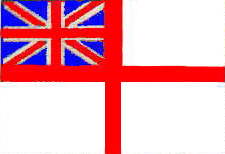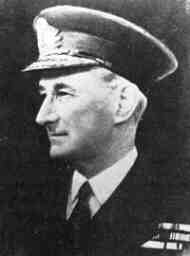|
|
H.M.S.
HOOD
(Fitted
as as Flagship)
J.Brown & Co., Clydebank
Begun: 1st Sept. 1916
Launched: 22nd August 1918
Completed: 5th March 1920
Standart displacement: 42,100 tons (46,200 tons full load)
Lenght: p.p. 810 ft., o.a. 860 ft. 7 in.
Beam: w.l. outside bulbes 105 ft. 2.5in.
Draught: mean 28.5 ft. , max. 31.5 ft.
Crew: 1,421

|

THE GROUP COMMANDER ADMIRAL
LANCELOT HOLLAND ALSO LOST HIS
LIFE ABOARD HMS HOOD |
Machinery (by
Builders):
Brown
- Curtis (geared) turbines. 4 screws. Boilers: 24 Yarrow (small
tube). Designed S.H.P. 144,000 = 31 kts.
Fuel: Oil only. 1200 tons normal, 4,000 tons maximum.
|
Guns:
8-15 inch. 42 cal.
12-5.5 inch. 50 cal.
2-4.7 AA.
4-4 inch (anti-aircraft.)
4-3 pdr.
1-12 pdr. Field.
5 M.G. and Multiple AA.
10 Lewis.
Torpedo tubes
(21 inch)
2 submerged (P. &
S.)
4 above water in pairs.
Aircraft:
1-Fairey
III F. |
 |
|
 |
Armour (K. C.):
Vertical:
3" Side (submerged)
12", 7", 5" Side (amidships)
6" - 5" Side (forward)
6" Side (aft)
5", 4" Bulkh`ds (f. & a.)
12" - 11" Barbetters
15" Face turrets
12" - 11" Sides turrets
12" & 9" C.T.
6" C.T. Base
6" Director tower
4" - 3" Torp. control tower
5.5" P. & S. R. F. towers
1" Funnel uptakes
1" (H. T.) Shields to 5.5" guns |
Armour (H. T.):
Decks:
2" Forecastle
1" U.D. amidships
1.5" - 3" Main deck
3" M. D. over magazines
1.5" - 1" L. D. forward
3" - 1" L. D. aft |
Crowns:
3" Director tower
5" C. T.
3" Torpedo control tower
5" Turrets
Special protection (H. T.):
1.5" and 0.75"
Torp. pro. b`lk`d over magazines, boiler and engine rooms, bulges
and buoyancy spaces. |
|
 |
Gunnery Notes.
Barbette
heights over l.w.l. : A, 32ft. ; B, 43 ft. ; X, 31.75ft. ; Y,
21.75ft. All turrets bear 150deg. on each beam. Designed to mount
16 - 5,5 inch, but the after guns were removed before completion.
Elevation of 15 inch guns, 30deg. . 8 - 36 inch controlled, and
4 - 24 inch signalling S. L. Stern attachment for PVs. of new
design. guns, mountings, barbettes and ammunition = 5300 tons.
Armour Notes.
Vertical
side armour is backed by strong 2" - 1" H.T. plating,
not included in thicknesses given. Area of 12" armour at
w.l., 562 ft. long by 9.5 ft. deep. Gun houses, new type with
flat crowns, small square sighting ports cut low in face for
laying over open sights. On roofs, armoured cases slightly wider
than R.F. to allow R.F. to be traversed for fine adjustments.
Barbettes, 6" - 5" as they descend through decks. C.T.
is an enormous, elaborate, most expensive and ponderous structure:
in upper stages, it consists of two shells, 12" outer, 9"
inner, with narrow passage between. The slope inboard of hull
side detracts from effects of plunging fire by virtual increase
of armour thickness. A perpendicular, dropped from top sides,
just meets outer edges of bulges, which are of the improved "D`Eyncourt-Hopkinson"
type. Total weight of armour and protection, 13,800 tons.
Engineering Notes.
During
world cruise, economical speed worked out at 288 miles in 24
hours on 180 tons of oil.
Trials(unofficial figures.)
At 42,200
tons, 151,000 S.H.P. = 32.07 kts. (run in bad weather, wind force
6 Beaufort scale) on Arran mile. At 44,600 tons, 31.89 kts. mean
attained. On 2/5 power, 25 fts. easily secured. Total weight
of machinery (with water in boilers to working level) = 5,350
tons.
Original Design.
The
original 1915 Design embodied same lenght and beam, but draughts
were 25.5 feet normal = 36,300 tons, and 29 feet deep. Speed:
32 kts. Belt 8", barbettes 9", much thinner deck armour,
and only 2 - 21 inch submerged T.T. Four ships ordered to this
design April, 1916. In the desigh produced after Jutland (not
approved till 1917), 5,000 tons extra protection was worked in.
By use of small-tube boilers, 24,000 S.H.P. gained on same machinery
weights as for Renown class.
Notes.
Begun
under Emergency War Programme. Originally, there were four ships
in this class, Anson, Hood, Howe, Rodney. They were begun
in the autumn of 1916, to meet the German Battle Cruisers, Graf
Spee, Mackensen, Ersatz, Freya and Ersatz "A",
which were laid in 1916. Contractors were: Anson (Armstrong),
Howe (Cammbell Laird), Rodney (Fairfield), Hood (Brown). The
enemy having ceased work on all his large ships, in 1917, Anson,
Howe and Rodney were stopped in March, 1917, and dismantled to
clear slips after the Armistice, but not before £ 860,000
had been expended on them. These ships were redesigned to
meet the lessons of Jutland. In Hood, the outstanding feature
is the huge areas covered by heavy armour, strong framing, &c.
- in fact, the general scheme of protections is most comprehensive.
Cost about £ 6,025,000 = £ 145 per top. Annual upkeep,
£ 427,270. Due for replacement, 1941. General refit, 1929-30.

|
On board of H.M.S. HOOD |
In recent
years in the press there has been much discussion as to whether
the Silver Cockerel Trophyactually existed. Below is a photo
of which I am proud. It shows the winning Signals Whaler crew
of the1935 Home Fleet Regatta. At the feet of the gathering is
the Silver Cockerel Trophy. My Grandfather,Leading Signalman
Frederic Howell (aged 36) is on the right of the front row.
The only
other known person in the photo is Commander Rory O'Connor RN,
who is seated with the
telescope. Please Email at keith@brixworth.force9.net if you know the names
of any others in the photo.
[TOP] |





